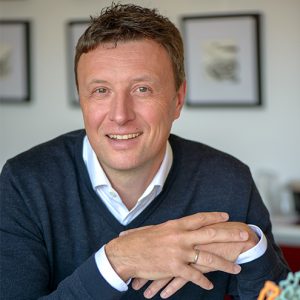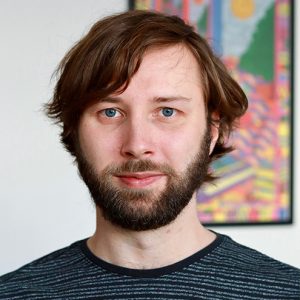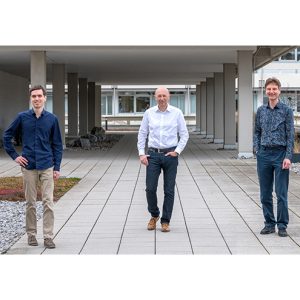26.03.2021
The German Society for Biochemistry and Molecular Biology honors the Göttingen Max Planck Director and MBExC member Patrick Cramer with the Otto Warburg Medal. At the virtual event, he will present his latest results from corona research. Link to the MPI-BPC press release
25.03.2021
Colocalization for super-resolution microscopy via optimal transport
Authors Tameling C, Stoldt S, Stephan T, Naas J, Jakobs S, Munk A Journal Nature Computational Science Citation Nat Comput Sci 1, 199–211 (2021). Abstract Super-resolution fluorescence microscopy is a widely used technique in cell biology. Stimulated emission depletion (STED) microscopy enables the recording of multiple-color images with subdiffraction resolution.
23.03.2021
Molecular Profiling Reveals Involvement of ESCO2 in Intermediate Progenitor Cell Maintenance in the Developing Mouse Cortex
Authors Ulmke PA, Sakib MS, Ditte P, Sokpor G, Kerimoglu C, Pham L, Xie Y, Mao X, Rosenbusch J, Teichmann U, Nguyen HP, Fischer A, Eichele G, Staiger JF, Tuoc T Journal Stem Cell Reports Citation Stem Cell Reports. 2021 Mar 23:S2213-6711(21)00138-7. Abstract Intermediate progenitor cells (IPCs) are neocortical neuronal
23.03.2021
RIM-binding proteins are required for normal sound-encoding at afferent inner hair cell synapses
Authors Krinner S, Predoehl F, Burfeind D, Vogl C, Moser T Journal Frontiers in Molecular Neuroscience Citation Front. Mol. Neurosci. 14:651935. Abstract The afferent synapses between inner hair cells (IHC) and spiral ganglion neurons are specialized to faithfully encode sound with sub-millisecond precision over prolonged periods of time. Here, we
23.03.2021
Multiscale photonic imaging of the native and implanted cochlea
Authors Keppeler D, Kampshoff C, Thirumalai A, Duque-Afonso CJ, Schaeper J, Quilitz T, Töpperwien M, Vogl C, Hessler R, Meyer A, Salditt T, Moser T Journal PNAS Citation PNAS May 4, 2021 118 (18) e2014472118. Abstract The cochlea of our auditory system is an intricate structure deeply embedded in the
22.03.2021
Origins and mechanisms leading to aneuploidy in human eggs
Authors Wartosch L, Schindler K, Schuh M, Gruhn JR, Hoffmann ER, McCoy RC, Xing J Journal Prenatal Diagnosis Citation Prenatal Diagnosis. 2021;1–11. Abstract The gain or loss of a chromosome—or aneuploidy—acts as one of the major triggers for infertility and pregnancy loss in humans. These chromosomal abnormalities affect more than
18.03.2021
How synapses maintain their activity despite ageing
Scientists of the Göttingen Cluster of Excellence Multiscale Bioimaging (MBExC) and the Collaborative Research Center 1286, University Medical Center Göttingen and Max Planck Institute for Dynamics and Self-Organization uncover a link between protein turnover and synaptic activity. Published in Cell Reports. Link to the press release
18.03.2021
How synapses maintain their activity despite ageing
Scientists of the Göttingen Cluster of Excellence Multiscale Bioimaging (MBExC) and the Collaborative Research Center 1286, University Medical Center Göttingen and Max Planck Institute for Dynamics and Self-Organization uncover a link between protein turnover and synaptic activity. Published in Cell Reports. (mbexc/umg) Synapses, the communication sites between nerve cells, are
18.03.2021
Sequence determinants of human gene regulatory elements
Authors Sahu B, Hartonen T, Pihlajamaa P, Wie B, Dave K, Zhu F, Kaasinen E, Lidschreiber K, Lidschreiber M, Daub CO, Cramer P, Kivioja T, Taipale J Journal bioRxiv Citation bioRxiv 2021.03.18.435942. Abstract DNA determines where and when genes are expressed, but the full set of sequence determinants that control
17.03.2021
MINSTED resolves fluorescent molecules with resolution at the nanometer scale
Scientists working with MBExC member Stefan Hell at the Max Planck Institute (MPI) for Biophysical Chemistry in Göttingen and the Heidelberg-based MPI for Medical Research have developed another light microscopy method, called MINSTED, which resolves fluorescently labeled details with molecular sharpness. With MINSTED, Nobel laureate Hell has come full circle.






